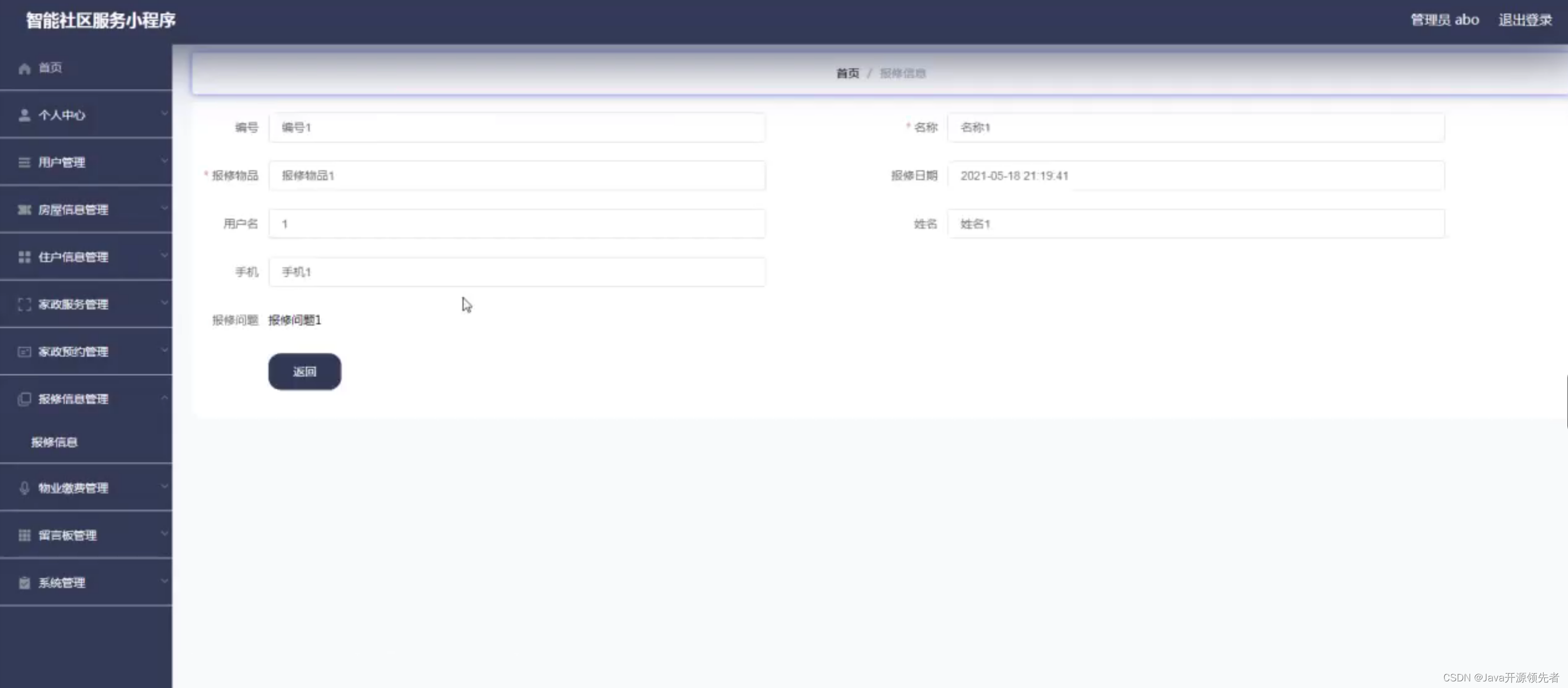vuex之module的使用
page=${context.state.page}&size=${context.state.size}&username=${object.query}this.$store.dispatch('user/getAllUserList',{_thisthis,querythis.query})//this是Vue实例。//有命名空间提交方式,类似this.$store.dispatch("us
·
一、module的作用
由于使用单一状态树,应用的所有状态会集中到一个比较大的对象。当应用变得非常复杂时,store 对象就有可能变得相当臃肿。
为了解决以上问题,Vuex 允许我们将 store 分割成模块(module)。每个模块拥有自己的 state、mutation、action、getter、甚至是嵌套子模块——从上至下进行同样方式的分割:
二、module的使用方法
1、配置
- 项目结构

- 在index.js文件中进行组装

import Vue from 'vue'
import Vuex from 'vuex'
import state from './state'
import mutations from './mutations'
import getters from './getters'
import actions from './actions'
import user from './modules/user'
import rights from './modules/right'
import roles from './modules/role'
import homes from './modules/home'
Vue.use(Vuex);
//组装模块并导出 store 的地方
export default new Vuex.Store({
//根节点相关
state,
mutations,
getters,
actions,
//模块相关
modules: {
user,
rights,
roles,
homes,
},
});

- 在main.js的vue中进行注册store

import router from './router'
import store from './store/index'
var vm = new Vue({
el: '#app',
router,
store,
components: {App},
template: '<App/>'
});

2、使用
- 以module文件夹中的user.js为例,如果建立的只是给固定的组件User组件使用,在user.js文件中使用命名空间

export default {
namespaced: true,//使用命名空间,这样只在局部使用
state: {
},
mutations: {
},
getters: {
}
}

- 在User组件中发送ajax请求,注意携带命名空间的名称,也就是index.js组装时使用的名字

created() {
this.getUsers()
},
methods:{
getUsers() {
//将token设置在请求头中提交,已经在拦截器中设置
// this.$http.defaults.headers.common['Authorization'] = localStorage.getItem("token");
this.$store.dispatch('user/getAllUserList', {_this: this, query: this.query})//this是Vue实例
},
}

- 在user.js文件中的action进行异步操作

//有命名空间提交方式,类似this.$store.dispatch("user/getAllUserList");
actions: {
//将Vue实例进行传递接收
// getAllUserList(context, _this) {
// //局部状态通过 context.state 暴露出来,根节点状态则为 context.rootState:
//加入分页
getAllUserList(context, object) {
//局部状态通过 context.state 暴露出来,根节点状态则为 context.rootState:
//发送get请求获取API数据 crm/user?page=${context.state.page}&size=${context.state.size}&username=${object.query}
object._this.$http.get(`crm/user?page=${context.state.page}&size=${context.state.size}`)
.then((response) => {
// handle success
context.commit('GETALLUSER', response.data);
object._this.$message.success("获取数据成功")
object._this.page=1
})
.catch((error) => {
// handle error
console.log(error);
})
.finally(() => {
// always executed
});
// const response = await this.$http.get('crm/user');
// context.commit('GETALLUSER', response);
},
}

- 在user.js的mutations中进行state值得修改

mutations: {
//action中提交该mutation
GETALLUSER(state, data) {
state.UserList = data.results; //将添加成功的数据添加到状态,用于页面更新
state.Total = data.count
},
}

当然,在此之前state是需要初始化的:

state: {
UserList: [],
Total: null,
size: 2,
query: null,
page: 1,
}

- 在getters中对state数据根据需求进行过滤

getters: {
getUserList: state => {
return state.UserList;
}
}

- 在User组件中通过computed方法获取getters

import {mapGetters} from 'vuex'
export default {
name: "User",
computed: {
...mapGetters({
UserList: 'user/getUserList',
}),
}
}

这样就可以在html中直接使用UserList属性了。
三、action、mutation、getters的互相调用
1、actions中调用其它action

async delUser(context, object) {
//context包含的参数:commit,dispatch,getters,rootGetters,rootState,state
...
...
//删除后刷新页面
context.dispatch("getAllUserList", object._this)
}
},

在action中通过context.dispatch方法进行调用
2、getters中调用其它gerter

getters:{
getRolesList: state => {
return state.RoleList;
},
//调用其它getter
getRoleIdList: (state, getters) => {
let RoleIdArray = [];
getters.getRolesList.forEach(item => {
RoleIdArray.push(item.id);
});
return RoleIdArray
},
}

getters中可以传入第二个参数就是getters,然后通过这样使用其它getter。当然getters也可以传入根节点状态和getters。

getters: {
// 在这个模块的 getter 中,`getters` 被局部化了
// 你可以使用 getter 的第四个参数来调用 `rootGetters`
someGetter (state, getters, rootState, rootGetters) {
},
},

3、组件中获取getters
(1)带上命名空间访问
getters['user/getUserList']
(2)通过辅助函数访问(推荐)

import {mapGetters} from 'vuex'
computed: {
...mapGetters({
UserList: 'user/getUserList',
total: 'user/getTotal',
DeptList: 'user/geDeptList',
RoleList: 'user/getRolesList',
RoleIdList: 'user/getRoleIdList',
AllRoleList: 'user/getALLRolesList',
AllRoleIdList: 'user/getAllRoleIdList',
permissionDict: 'getPermission'
}),
}

4、组件中提交action
this.$store.dispatch('user/setRole', {
_this: this,
id: this.currentuser.id,
rid_list: {roles: this.CheckedRolesIdList}
})
如果是全局的就不需要加上局部命名空间user
更多推荐
 已为社区贡献3条内容
已为社区贡献3条内容









所有评论(0)